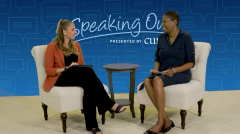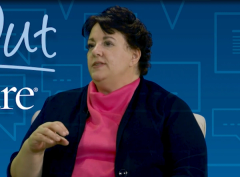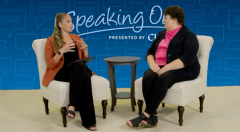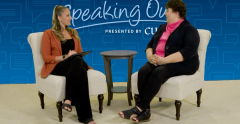
Understanding Breast Cancer Recurrence and Treatment Options
As part of its Speaking Out video series, CURE spoke with Marla Sustin, from University Hospitals Seidman Cancer Center, about prognostic and predictive outcomes in breast cancer, and the options available as a result.
Episodes in this series

Determining the risk of breast cancer recurrence is a complex process involving both prognostic and predictive tools; however, outcomes can help patients and providers determine the best approach to continued care after treatment has ended.
As part of its Speaking Out video series, CURE® spoke with Marla Sustin, a nurse practitioner at University Hospitals Seidman Cancer Center in Cleveland, about the risk for recurrence in breast cancer and treatment options are available based on results of the Breast Cancer Index.
Prognostic factors include the tumor's size, grade and hormone receptor status, such as estrogen positivity. These factors help classify patients into risk categories: high, medium or low risk. Predictive tools, often based on genomic testing, provide more definitive results with precise insights into a patient's recurrence risk, intended to guide treatment decisions.
Anti-estrogen therapy is a standard breast cancer treatment that aims to suppress the hormone receptors responsible for tumor growth. It can be administered naturally through menopause or artificially to reduce estrogen exposure, depriving the cancer cells of their energy source.
A critical aspect of breast cancer treatment is the duration of therapy, especially for anti-estrogen treatment. Patients often wonder about the ideal treatment length, and the consensus is to continue therapy for at least five years.
According to Sustin, genomic testing, performed around year four, helps determine if extended therapy beyond five years is necessary based on the results of the Breast Cancer Index. High ratios from the index suggest a need for 10 years of anti-estrogen therapy, while low ratios may allow patients to discontinue treatment at year five.
Further, to help reduce one’s risk for recurrence, Sustin suggested that patients can adopt a healthy lifestyle, such as maintaining an ideal weight, consuming a plant-based diet, limiting alcohol intake, quitting smoking and engaging in regular exercise. She also mentioned that stress management is also crucial, as high stress levels can affect health negatively..
From a supportive care standpoint, utilizing yoga, bone-focused exercises, and cooking classes that emphasize healthy eating can complement traditional treatments.
For more news on cancer updates, research and education, don’t forget to









